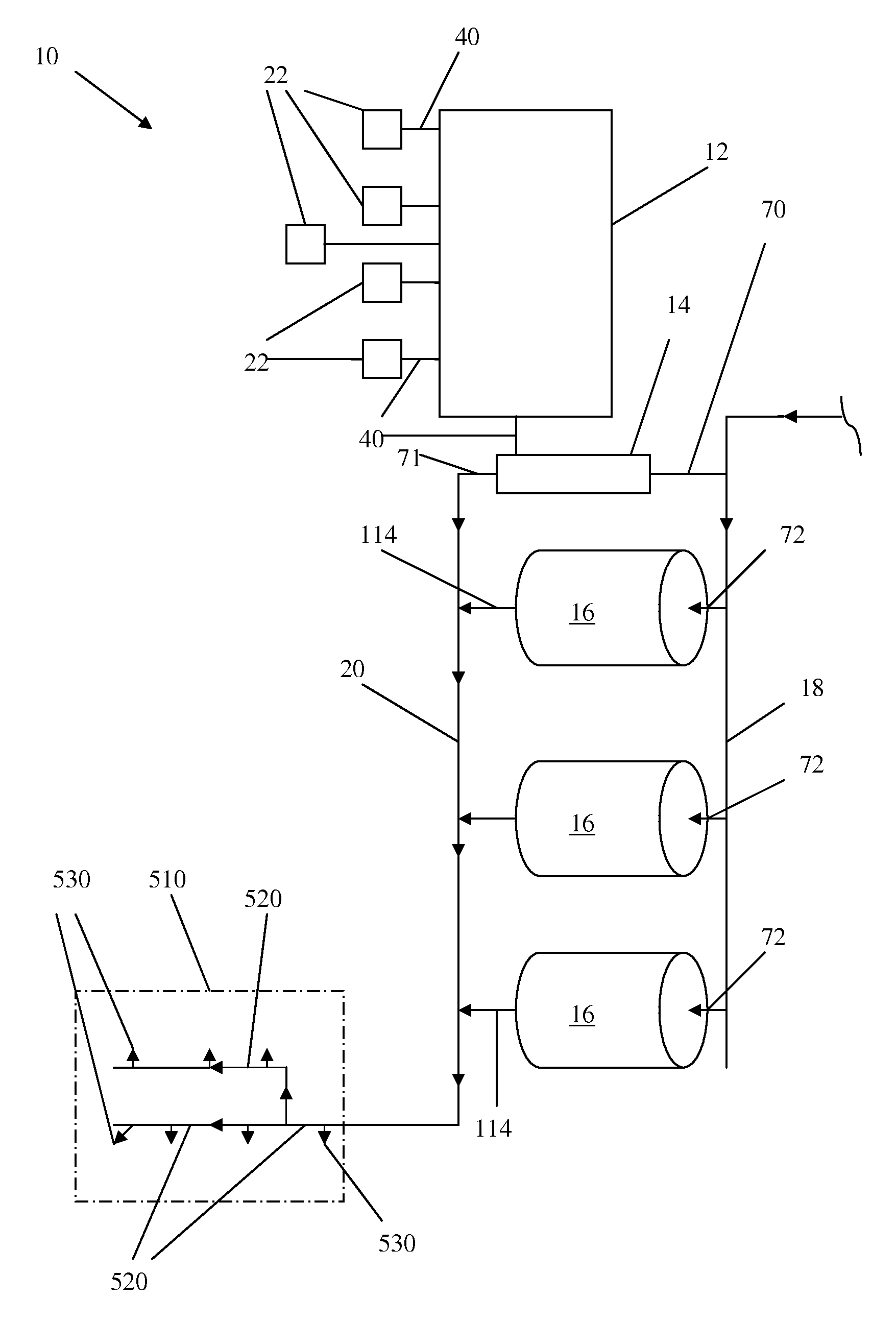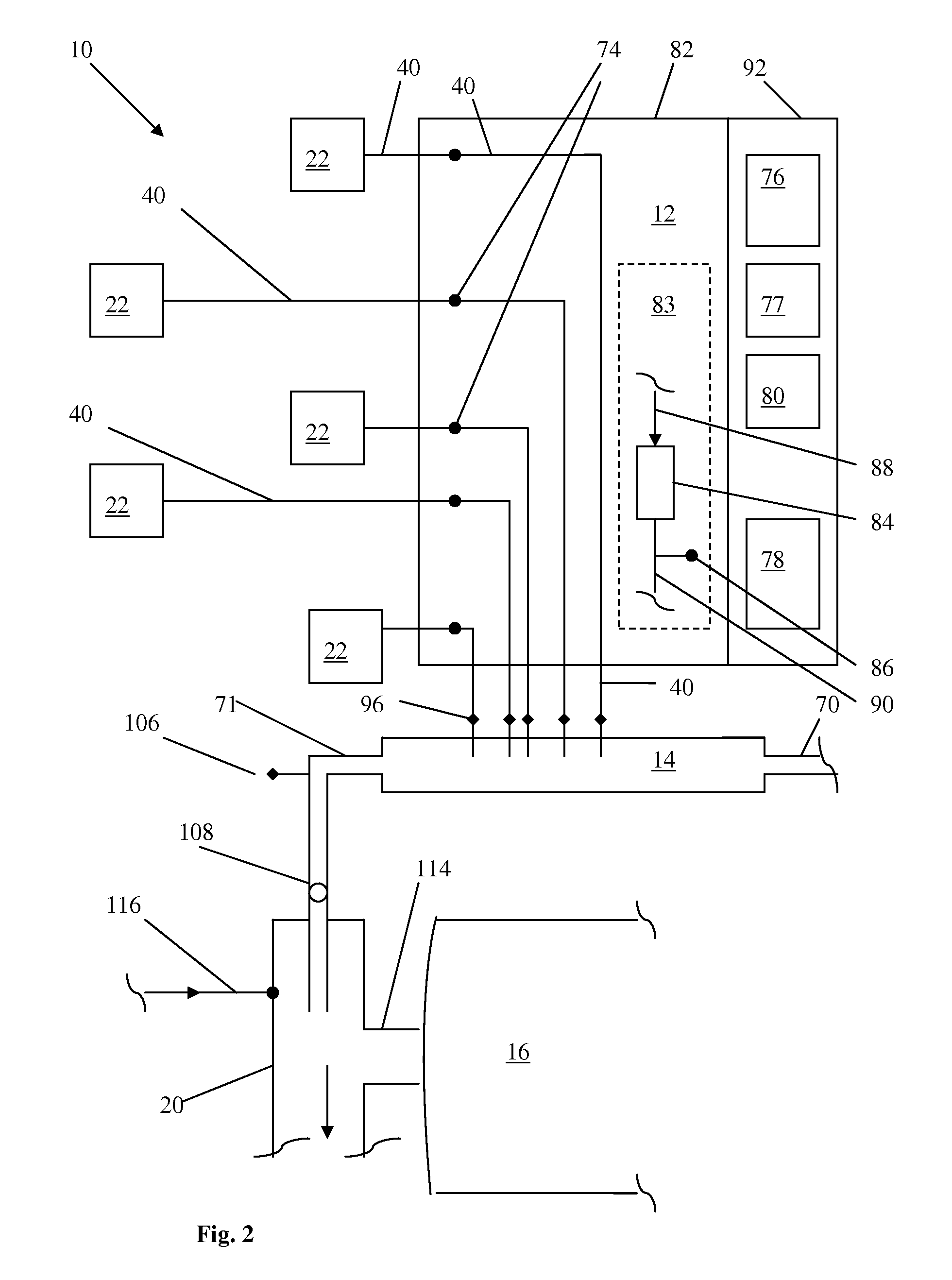Method and system for agricultural fertigation
- Summary
- Abstract
- Description
- Claims
- Application Information
AI Technical Summary
Benefits of technology
Problems solved by technology
Method used
Image
Examples
example 1
Continuous-Feeding Projections and Multivalent Ion Levels
[0157]The continuous manufacture and addition time periods, the crop-quality enhancers continuously fed and the amount and type of nutrient / additive applied are set forth in Table 4 below.
[0158]
TABLE 4Time periodRaw MaterialsAmount(s) of Nutrient / Additive Applied2 / 1-6 / 30Calcium nitrate13.7 lbs / acre nitrate nitrogen (as N) and soln.19.5 lbs / acre Ca (as Ca)sameMagnesium6.9 lbs / acre nitrate nitrogen (as N) and nitrate soln.6.0 lbs / acre Mg (as Mg)sameUrea soln.7.0 lbs / acre urea nitrogen (as N)sameAmmonium8.7 lbs / acre ammoniacal nitrogen (as N)hydroxide soln.samePotassium25.0 lbs / acre potassium (as K2O)hydroxide soln.samePhosphoric acid11.0 lbs / acre phosphorus (as P2O5)(conc.)sameSulfuric acidas required to both react with other (conc.)crop-quality enhancers and lower the irrigation-water pH to 6.57 / 1-9 / 30Calcium nitrate13.7 lbs / acre nitrate nitrogen (as N) soln.and 19.5 lbs / acre Ca (as Ca)samePotassium15.0 lbs / acre potassium (as K...
example 2.1
Continuous Feed—Acid / Base Reaction Profile
[0195]Since (as shown above) there is considerably more alkalinity being added to the irrigation, to avoid the massive plugging that ordinarily would occur, concentrated sulfuric acid is added to neutralize the excess alkalinity (achieve a neutral pH) in the approximate amount of: (1267.2 OH— moles / acre)−(764.8 H+ moles / acre) or 502.4 H+ moles / acre. That requires: 502.4 H+ moles / acre×98 g / mole×(H2SO4 / 2H+)×100% / 98%×2.2 lbs. / 1000 g or 55.3 lbs. / acre. The volume amount is 55.3 lbs. / acre×150 acres×1 gal. / 15.30 lbs. or 541.8 gallons.
[0196]During the time period of March 1 through May 31, there are 75.2 irrigation periods (1.0 ac-ft / acre / (0.0133 ac-ft), and the sulfuric acid feed rate is: 541.8 gal. / 75.2 cycles×1 cycle / 9.0 hrs.×1 hr. / 60 min. or 0.0133 gal. / min. (over 75.2 fertigation applications). In practice, the sulfuric acid pump is preferably initially set for about 120 percent of the calculated feed rate to achieve the desired pH because of ...
example 2
Projection
Calcium, Phosphorus, Water Quality
[0218]As noted above, the irrigation water at this site contains 150 ppm calcium (as CaCO3) or 60 ppm (as Ca). As noted in the projection above, the continuous feed method and system of the present invention provides a concentration of 14.81 ppm PO4-3 in the irrigation water from March 1 up to, but not including, June 1, and a concentration of 19.75 ppm PO4-3 in the irrigation water from September 1 up to, but not including, November 1. The calcium concentration thresholds for these time periods are 94.8 and 78.2 ppm calcium (as Ca) respectively, and the calcium concentrations from the continuous fertigations are 3.07 and 6.13 ppm calcium (as Ca) respectively. The addition of 60 ppm calcium (as Ca) already present in the irrigation water raises the calcium concentrations to about 63.1 and 66.2 ppm calcium (as Ca) respectively, which remain well below the thresholds of 94.8 and 78.2 ppm calcium (as Ca) respectively. In other words, despite ...
PUM
 Login to View More
Login to View More Abstract
Description
Claims
Application Information
 Login to View More
Login to View More - R&D
- Intellectual Property
- Life Sciences
- Materials
- Tech Scout
- Unparalleled Data Quality
- Higher Quality Content
- 60% Fewer Hallucinations
Browse by: Latest US Patents, China's latest patents, Technical Efficacy Thesaurus, Application Domain, Technology Topic, Popular Technical Reports.
© 2025 PatSnap. All rights reserved.Legal|Privacy policy|Modern Slavery Act Transparency Statement|Sitemap|About US| Contact US: help@patsnap.com



